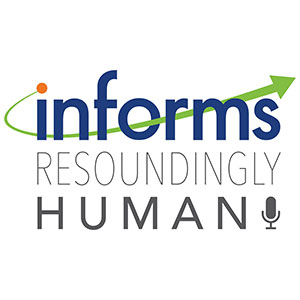
Sheldon Jacobson: Would a JetBlue and Spirit merger be all that bad for travelers?
JetBlue is seeking permission to merge with Spirit Airlines. The U.S. Department of Justice is working to block the purchase. Does this make sense for air travelers?

JetBlue is seeking permission to merge with Spirit Airlines. The U.S. Department of Justice is working to block the purchase. Does this make sense for air travelers?

Biometrics are the physical features that differentiate us — like our fingerprints, eyes and facial structure. And companies that build facial recognition tools can now gather photos of us — like that selfie you just posted on Instagram — and sell the information to a company that could then use it to control you in some way.

In celebration of Women’s History Month, we asked readers to tell us about the women leaders they appreciate in the association industry and beyond.

Home health was one of the fastest-growing categories for healthcare spending in January, according to a healthcare economic indicator report released Wednesday by healthcare consulting firm Altarum.

If your kids are completing their homework in record time or your partner has a newly discovered way with words, you may want to learn about ChatGPT — new conversational software fueled by artificial intelligence. Consumer Reporter Asa Aarons Smith explains.

Jeff Cohen
Chief Strategy Officer
INFORMS
Catonsville, MD
[email protected]
443-757-3565
An audio journey of how data and analytics save lives, save money and solve problems.


With seemingly no limit to the demand for artificial intelligence, everyone in the energy, AI, and climate fields is justifiably worried. Will there be enough clean electricity to power AI and enough water to cool the data centers that support this technology? These are important questions with serious implications for communities, the economy, and the environment.

It’s college graduation season, which means over 4 million seniors will graduate in the next few weeks, flooding the job market with new candidates. One area that has shown high potential for the right candidates is artificial intelligence and machine learning. Both disciplines are part of the larger data and analytics career path.

Drugs being explicitly developed to treat rare diseases are getting more expensive.

Robert F. Kennedy Jr., as the new secretary of Health and Human Services, is the nation’s de facto healthcare czar. He will have influence over numerous highly visible agencies, including the Centers for Disease Control and Prevention, the National Institutes of Health and the Food and Drug Administration, among others. Given that healthcare is something that touches everyone’s life, his footprint of influence will be expansive.

The recent US-China agreement to temporarily reduce tariffs is a major step for global trade, with tariffs on US goods entering China dropping from 125% to 10% and on Chinese goods entering the US decreasing from 145% to 30% starting May 14. While this has boosted markets and created optimism, key industries like autos and steel remain affected, leaving businesses waiting for clearer long-term trade policies.

With sweeping new tariffs on Chinese-made products set to take effect this summer, Americans are being urged to prepare for price hikes on everyday goods. President Donald Trump's reinstated trade policies are expected to affect a wide swath of consumer imports, including electronics, furniture, appliances, and baby gear. Retail experts are advising shoppers to act before the tariffs hit and prices rise.

Twenty years ago, few people would have been able to imagine the energy landscape of today. In 2005, US oil production, after a long decline, had fallen to its lowest levels in decades, and few experts thought that would change.

In the case of upgrading electrical and broadband infrastructure, new analysis from the University of Massachusetts Amherst reveals {that a} “dig once” strategy is almost 40% more economical than changing them individually.